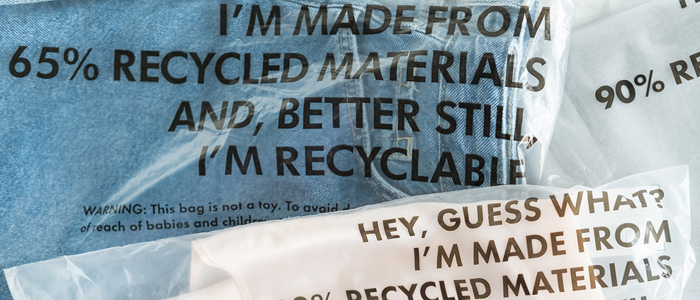What is greenwashing and what is driving risk in this area?
As the Financial Markets Authority’s Executive Director of Response and Enforcement recently pointed out, greenwashing, which he effectively defines as “misleading or false claims about social or environmental benefits or impact”, goes to the heart of fair dealing, and the overall impression provided by marketing materials is critical.
ESG statements with no clear achievable programme are becoming high-risk for organisations where adequate internal due diligence is not undertaken. This environment creates two distinct types of greenwashing:
- Where deliberate ESG claims are made that the person communicating knows or ought to know are untrue. Fortunately, this is rare.
- Well-meaning aspirations at the board or ELT level to address investor or customer concerns, which are not translated into everyday business.
The potential risk is growing, given the extent of reporting around the world. According to KPMG’s 2022 Survey of Sustainability Reporting, based on an analysis of reports and websites from 5,800 companies in 58 countries, territories and jurisdictions, sustainability reporting is growing at pace.
What are the key greenwashing risks today?
Amid this rapid rise in reporting, greenwashing risk can be seen in four common situations.
Greenhouse gas emissions reduction targets
Organisations are scrambling to meet net zero emissions targets by 2050, and are sometimes tempted to set aspirational goals without knowing how they are going to get there. This is an area of particular concern right now. Reduction targets and pathways are capable of genuine intention, but they
can be deemed misleading if they are not based on reasonable grounds.
Standards for truthful labelling of products and services
Labelling products as sustainable, ethical or green has moved from being a broad to a more defined and higher standard of conduct. The Commerce Commission acknowledges that consumers are increasingly considering the environment when making purchasing decisions and has released a set of guidelines governing environmental claims. The FMA has recently said that it is “sharpening its focus in this area [greenwashing] and there are broader policy and consumer tailwinds for claims to be articulate, accurate and meaningful”. It’s notable that in the same media release the FMA referred to response to Russian actions in Ukraine, making it clear the concern extends to ethical and sustainability claims in addition to climate.
Enterprise branding
Consumer protection regulators, and environmental activists are scrutinising greenwashing in corporate brand advertising campaigns too. Even if the specific statements are technically correct, the overall impression about the business can be misleading. Perhaps the high point of this was in October 2022 when the UK Advertising Standards Authority banned two HSBC advertisements promoting its climate change response, for omitting reference to the HSBC’s continued financing of fossil fuel projects and links to deforestation.
Disclosure in offering documents, financial reports and accompanying narrative
Legally required disclosures present a particular area of risk, because the content is often prescribed. The obvious example is the new mandatory framework for climate-related disclosure (CRD) under Part 7A of the Financial Markets Conduct Act 2013 (FMCA). But other entities may have existing requirements to assess what impact climate change has on their financial statements under current Australian and New Zealand Accounting Standards. In addition, those making regulated offers under the FMCA may need to address physical and transitional climate impacts, and also risk statements in any public offering documents they may have. And the disclosure under different regimes by the same entity e.g. CRD, financial statements and risk descriptions in product disclosure statements, needs to be able to be reconciled.
At the same time, businesses should avoid the temptation to partake in “greenhushing”, the latest trend overseas where issuers simply expunge all references to ESG or climate issues. That will not work for those subject to mandatory reporting requirements. But even for others, climaterelated impacts or ESG risks to their business may well be material to prudent, but non-expert, investors.

What can organisations do to improve their ESG performance?
Consider the seven points below when approaching ESG due diligence, governance, and claims.
- The ESG governance message needs to come from the top. If it’s not yet on your agenda, then you’re already behind. At the same time, it needs to cascade down to the frontline.
- Make reporting and disclosure on ESG as important as other risks that are already reported and disclosed.
- Apply the same due diligence processes (and apply them as rigorously) when making nonfinancial (i.e. ESG) claims as you would for financial claims.
- Ensure that aspirational policies/claims are underpinned by detailed programmes that show you can reasonably believe that the policies and claims will be achieved – that they are not “pie in the sky”.
- Stand in the shoes of investors and customers to evaluate what they would expect the claim to mean.
- Listen to your customers, investors and your people closest to them – do they support or criticise your actions in this area? Also consider how they and your suppliers are likely to be affected.
- Know your skills or knowledge gaps – if you need more awareness on this topic and the consequences it can have on you and your business, ask your legal team for an education session. Make sure you also have expertise in place as well.

Four key actions for every leadership team’s ‘to do’ list in relation to ESG claims
1. Identify all your current ESG-related claims made not only in mandatory disclosure (e.g. annual reports, CRD, product disclosure statements and disclose register entries), but also product names and promotional material e.g. on websites, in press releases and advertisements.
2. Undertake a risk assessment of all existing claims against regulator guidance/principles:
- Be truthful and accurate
- Be specific
- Use plain language
- Do not exaggerate
- Make information easy to locate and access
- Remember the overall impression counts, and technical accuracy is not enough if an ordinary investor would be misled
- Clearly explain and substantiate your claims – e.g. do you have reasonable grounds for a claim? Do you have a plan of action that gives reasonable grounds to believe future claims will be achieved?
- Be clear how you will measure performance and achieve the claim.
3. If past ESG claims have resulted in misleading or confusing customers, consider options for customer redress - and then take action promptly to address both the past and the future.
4. For the future, ensure you are clear on what your position is, and that future claims meet the tests above.


